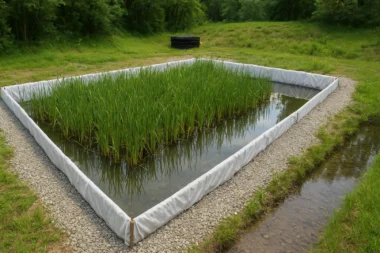Introduction
Access to a reliable and sustainable water supply is essential for various applications, ranging from agriculture to domestic use. In recent years, solar-powered water pumps have gained popularity as a cost-effective and environmentally friendly solution. These pumps utilize solar energy to pump water from underground or surface sources, providing a sustainable alternative to traditional fuel-powered pumps. This article will explore how solar-powered water pumps are made, the components and techniques involved in their construction, and how they leverage renewable energy to pump water efficiently.
How are solar-powered water pumps made?
Solar-powered water pumps are designed to efficiently convert solar energy into mechanical energy to drive the pumping mechanism. The process involves several key steps:
- Solar Panel Installation: High-quality solar panels are installed in a location that receives maximum sunlight exposure throughout the day. These panels consist of photovoltaic cells that convert sunlight into electricity.
- Solar Charge Controller: A solar charge controller connects the solar panels and the pump system. It regulates the electrical current, protects the batteries from overcharging, and ensures optimal power utilization.
- Energy Storage: Solar-powered water pumps often incorporate energy storage systems, such as batteries or capacitors, to store excess solar energy generated during peak sunlight hours. These energy storage devices ensure a continuous water supply even during cloudy or nighttime periods.
- Pumping Mechanism: The water pumping mechanism can vary depending on the specific application. Common types of pumps used in solar-powered systems include centrifugal and submersible pumps. An electric motor that uses energy from the solar panels drives the pump.
Components and Techniques Used in Solar-Powered Water Pumps:
Solar-powered water pumps consist of several essential components and utilize various techniques for efficient operation.
- Solar Panels: High-efficiency solar panels composed of multiple photovoltaic cells capture sunlight and convert it into electrical energy. These panels are typically silicon-based and coated with anti-reflective coatings to maximize light absorption.
- Solar Charge Controller: The charge controller regulates the flow of electrical current from the solar panels to the batteries or the pump system. It prevents overcharging or discharging of the batteries, ensuring optimal power management.
- Energy Storage: Batteries or capacitors store excess solar energy generated daily. This stored energy can be utilized during low sunlight or at night, ensuring a continuous water supply.
- Pumping Mechanism: The pumping mechanism is designed to efficiently move water from the source to the desired location. Submersible pumps are often used for wells or boreholes, while centrifugal pumps are suitable for surface water sources.
- Support Structures and Mounting: Rigid structures or mounting systems are used to secure the solar panels in an optimal position for maximum sunlight exposure. These structures are typically made of durable materials such as aluminum or galvanized steel.
Solar-Powered Water Pumps and Renewable Energy Usage:
Solar-powered water pumps utilize renewable energy from the sun to pump water, offering several advantages:
- Sustainability: Solar-powered water pumps rely on clean and abundant solar energy, reducing dependence on fossil fuels and minimizing carbon emissions. This helps mitigate environmental impacts and contributes to sustainable water management.
- Cost-Effectiveness: Once installed, solar-powered water pumps have lower operating costs than fuel-powered pumps. Solar energy is free, and maintenance expenses are generally lower, making it a cost-effective long-term solution.
- Accessibility: Solar-powered water pumps can be deployed in remote areas without electricity grids. They provide an independent and reliable water supply, promoting self-sufficiency and enhancing water accessibility for communities and agricultural activities.
- Reliability: Solar-powered water pumps are designed with robust components and require minimal maintenance. Proper installation and regular upkeep can provide a reliable and uninterrupted water supply for extended periods.
Case Study:
Implementation of Solar-Powered Water Pumps in a Rural Farming Community
Location: A rural farming community in a region with limited access to electricity and an unreliable water supply
Objective: To evaluate the effectiveness of solar-powered water pumps in providing a reliable and sustainable water supply for agricultural activities in the community.
Implementation:
- System Setup: Solar panels with a total capacity of 10 kW were installed in an open area with maximum sunlight exposure. A solar charge controller and a battery bank were integrated to store excess solar energy during non-daylight hours. A submersible solar-powered water pump with a capacity of 5,000 liters per hour was connected to the system.
- Water Source and Irrigation: The solar-powered water pump was deployed in a nearby well, tapping into the underground water source. Drip irrigation systems were installed on the community’s farmland to distribute water to crops while minimizing waste.
- Data Monitoring: A data monitoring system was implemented to track the performance of the solar-powered water pump, including the amount of water pumped, energy generation, and water flow rates.
Results:
- Reliable Water Supply: Implementing solar-powered water pumps provided a consistent and reliable water supply for agricultural activities. Even in areas with unreliable electricity, the solar-powered system ensured uninterrupted water pumping, mitigating the impact of water scarcity on crop production.
- Cost Savings: The solar-powered water pump significantly reduced operating costs compared to traditional fuel-powered pumps. The community no longer needed to purchase fuel or incur maintenance expenses related to engine-driven pumps, resulting in substantial cost savings over time.
- Sustainable Energy Usage: The solar-powered water pump system relied solely on renewable solar energy, eliminating the need for fossil fuels and reducing carbon emissions. This sustainable energy usage aligned with the community’s commitment to environmental conservation and reduced their carbon footprint.
- Increased Agricultural Output: Solar-powered water pumps’ reliable water supply positively impacted agricultural productivity. Crops received consistent irrigation, leading to improved growth, increased yields, and enhanced food security within the community.
- Community Empowerment: Implementing solar-powered water pumps empowered the farming community by giving them greater control over their water supply. They no longer depended on external factors such as fuel availability or electricity grid connections, allowing them to manage their water resources more efficiently.
- Long-Term Durability: The solar-powered water pump system demonstrated long-term durability and required minimal maintenance. The system continued functioning efficiently with proper care and periodic inspections, ensuring a sustained water supply for years.
Conclusion:
The case study exemplifies the successful implementation of solar-powered water pumps in a rural farming community. The community harnessed renewable solar energy and achieved a reliable and sustainable water supply for their agricultural needs. The solar-powered system provided cost savings, increased agricultural productivity, and contributed to the community’s commitment to environmental sustainability. This case study highlights the potential of solar-powered water pumps to transform water access in remote areas, enhance farming practices, and support sustainable development.



